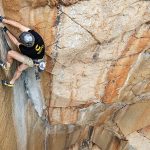Nike released an updated version of its Corporate Social Responsibility report last week, and while many mainstream media outlets reduced its contents to a simple reduction in overtime, the company actually laid out a broad series of goals that will likely have a serious impact on the way sourcing is conducted in the future. Nike has laid out three goals for the company involving human resources, environmental sustainability and advocacy. The company will be working to improve conditions in all contract factories; it will minimize its global environmental footprint through innovation; and it will “give excluded youth around the world greater access to the benefits of sport.”
With the recent increased attention given to environmental and corporate responsibility, Nikes latest report offers some good insights into new techniques and strategies that can help any company.
In a letter, NKE CEO Mark Parker said that reducing excessive overtime in its contract factories is a primary goal for the company, but it is only one of four HR targets that he plans to attain by 2011. Nike also plans to implement a “tailored human resources management system” in all contract factories. Nike will also be encouraging other brands to join them and aims to have 30% of their supply chain monitored in partnership with other companies. Finally, NKE will transition 90% of their footwear line to lean manufacturing processes.
In addition to the HR goals, Nike laid out some important environmental targets it wants to achieve by 2011. Nike has been working hard over the last two years to reduce CO2 emissions and has exceeded their goals. Over the next four years, they plan to make all Nike brand facilities completely carbon-neutral and all Nike Inc. facilities carbon-neutral by 2015.
Nike also set targets for waste reduction at all manufacturing facilities and has even taken the waste reduction process several steps further up the supply chain and into the design process itself. The company has been using its eco-friendly Nike Considered product line as a laboratory to figure out new design methods that reduce waste at the factory. Nike has set targets to first design all footwear to produce minimal waste, second it will implement similar design methods in apparel, and eventually all Nike products will follow this design ethos.
All of these initiatives are part of a broader holistic approach to CSR at Nike. Parker described the last CSR report, issued in April of 2005, as a “watershed event” for the company and today many of the discoveries they made are being turned into action. “An environmentally friendly product made under poor labor conditions is a hollow success. A product made under good conditions but is bad for our planet is a missed opportunity. We dont believe in trade offs,” the report stated. “We know a better shoe sacrifices nothing except what didnt belong there to begin with. The same can be said about corporate social responsibility. It shouldnt be about business tradeoffs, managing problems and mitigating risks. It should be about harnessing innovation to create something new and better.”
>>> With so many companies looking at CSR from a new perspective, this 100+ page report offers unprecedented transparency into the challenges Nike has faced in their efforts, and the solutions they have devised…













